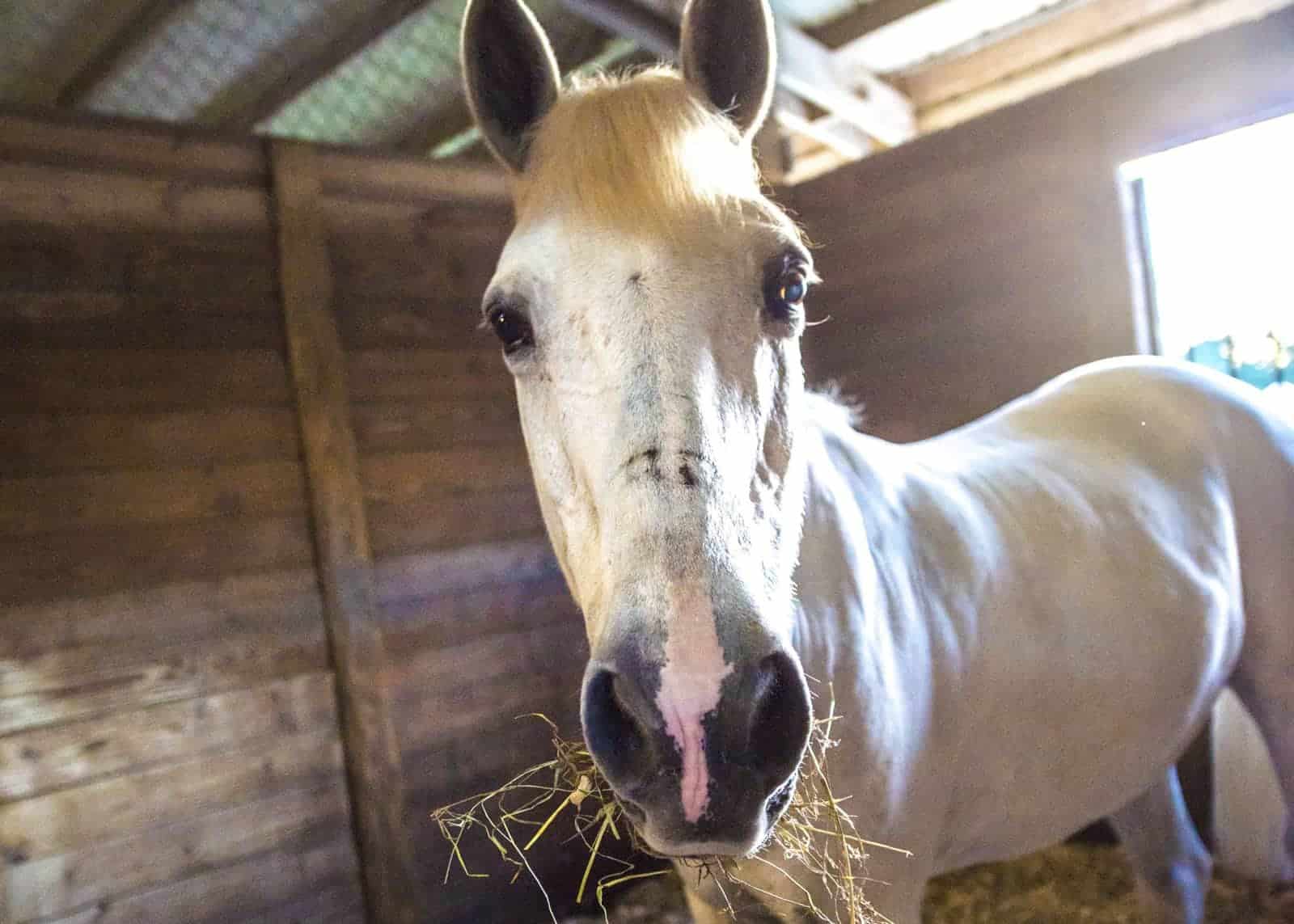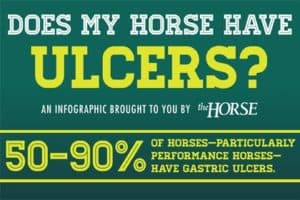Feeding the Ulcer-Prone Horse

How to craft a diet for the horse with painful lesions in his stomach
Which horses would you traditionally consider “ulcer-prone”? Racehorses in training? Western pleasure horses showing competitively on the American Quarter Horse Association circuit? Pony Clubbers’ games ponies? Injured horses on stall rest? Truth is, you could be right with any one of these.
Equine gastric ulcer syndrome (EGUS) can plague any age, breed, or sex, and the risk factors are many—certain types of training and exercise, nutrition, feeding practices, and stabling, to name a few. Let’s take a look at one very important aspect of preventing and managing ulcers: diet.
The Facts and Stats

The Equine Gastric Ulcer Council defines EGUS as a disease complex associated with ulceration of the esophageal, gastric, or duodenal mucosa. Clinical signs can include a reduced or poor appetite, weight loss, a dull skin and hair coat, attitude or behavior changes, impaired performance, reluctance to work, and colic. Researchers have yet to determine a very reliable detection method for ulcers via blood and fecal markers. Therefore, veterinarian-performed gastroscopy (viewing the horse’s stomach using a flexible lighted instrument passed through his nostril) is the only accurate diagnostic test
Create a free account with TheHorse.com to view this content.
TheHorse.com is home to thousands of free articles about horse health care. In order to access some of our exclusive free content, you must be signed into TheHorse.com.
Start your free account today!
Already have an account?
and continue reading.
Written by:
Kristen M. Janicki, MS, PAS
Related Articles
Stay on top of the most recent Horse Health news with











